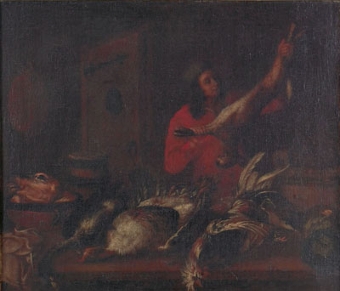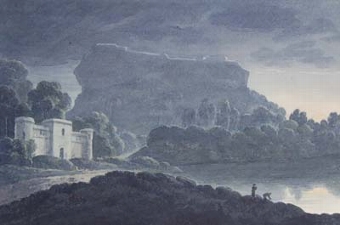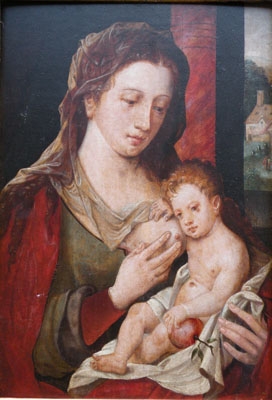featured item
field marshal jeffery amherst, 1st baron amherst kcb, 1717-1797
- View other items in:
- antiques interior design modern and vintage
- other interior design
artware ltd
Enquire about this antique
Artware Ltd has 565 antiques for sale.
click here to see them all
Amherst is best known as one of the victors of the French and Indian War, when he conquered Louisbourg, Quebec City and Montreal. He was also the first British Governor General in the territories that eventually became Canada. Numerous places and streets are named for him, both in Canada and the United States.
Jeffery Amherst was born in Sevenoaks, England on 29 January 1717, into a family of lawyers From an early age he received the patronage of the Duke of Dorset. Amherst became a soldier in 1735 when he became an ensign in the Grenadier Guards. From 1741 he served in the War of the Austrian Succession. His regiment was part of the British force sent to protect the Austrian Netherlands in 1741. He became an aide to General John Ligonier the following year. As a staff officer he participated in the Battle of Dettingen in 1743 and the Battle of Fontenoy. Along with much of the army in Flanders, he was recalled to Britain during the Jacobite Rebellion in 1745. Returning to the continent he was given a prestigious post as an aide to the Duke of Cumberland, the commander of the British forces and saw further action.
In February 1756 Amherst was appointed commissariat to the Hessian forces that had been assembled to defend Hanover as part of the Army of Observation. As it appeared likely a French invasion attempt against Britain itself was imminent, Amherst was ordered in April to arrange the transportation of thousands of the Germans to southern England to bolster Britain''s defences By 1757 as the immediate danger to Britain had passed the troops were moved back to Hanover to join a growing army under the Duke of Cumberland. Amherst fought with the Hessians at the Battle of Hastenbeck in July 1757. The Allied defeat there forced the army into a steady retreat northwards to Stade on the North Sea coast.
Amherst was left dispirited by the retreat and by the Convention of Klosterzeven by which Hanover agreed to withdraw from the war. He began to prepare to disband the Hessian troops under is command, only to receive word that the Convention had been repudiated and the Allied force was being reformed. Amherst was in Stade preparing to retake the offensive under the army''s new commander Duke Ferdinand of Brunswick when he received word summoning him back to England. Amherst gained fame during the Seven Years'' War, particularly in the North American campaign known in the United States as the French and Indian War. After he served in Europe in 1757, Amherst led the British attack on Louisbourg in 1758. Amherst judged that the year was too advanced for him to attempt attacks on either Quebec or New Orleans and returned to Britain. In the wake of this he was promoted to become commander-in-chief of the British army in North America, and led the successful British conquest of New France. In 1759, while James Wolfe besieged and eventually captured Quebec with one army, Amherst led another army against French troops on Lake Champlain, where he captured Fort Ticonderoga against little resistance but found his further advance frustrated and he had to delay any further move on Montreal until the following year.
On September 8, 1760, he led an army down the Saint Lawrence River from Lake Ontario, and captured Montreal, ending French rule in North America. He infuriated the French commanders by refusing them the "honours of war" (the ceremonial right of a defeated garrison to retain their flags); the Knight of L?vis burned the colors rather than surrendering them. Amherst held the position of military governor of Canada from 1760 to 1763. He oversaw the dispatch of troops to take part in British expeditions in the West Indies that led to the British capturing Dominica in 1761 and Martinique and Cuba in 1762. The hostility between the British and Native Americans after the French and Indian War led to one of the first documented attempts at biological warfare in North American history. In response to the 1763 uprising known as Pontiac''s Rebellion, Colonel Henry Bouquet wrote to Amherst, his commanding officer, with the suggestion that the British distribute smallpox-infected blankets to Indians. Amherst approved the plan and expressed his willingness to adopt any "other method that can serve to Extirpate this Execrable Race." In fact, the commander at Fort Pitt had already attempted this very tactic in June 1763. It is the only recorded case of British soldiers giving smallpox-contaminated blankets to Native Americans.
Amherst served as the nominal Crown Governor of Virginia from 1759?1768, though Francis Fauquier continued his role as acting governor from the previous term. During this period he also served as the first Governor General of British North America from 1760 to 1763. This office still exists as the Canadian monarch''s representative in Canada. He returned to Britain following Pontiac''s Rebellion, but was disappointed by the reception he received. In 1772 Amherst was apponted Lieutenant-General of the Ordnance and soon gained the confindence of George III who had initially hoped the position would go to a member of the Royal Family.
Amherst was raised to the peerage in 1776, as Baron Amherst of Holmesdale. During the American War of Independence he rejected a field command, since he had close relations with numerous personalities of the opposite side. He was promoted to Brigadier General in 1778, and became Commander-in-Chief of the Forces, which gave him a seat in the Cabinet. In 1778 when the British commander in North America, William Howe, requested to be relieved, Amherst was considered as a replacement by the government. However, his insistence that it would require 75,000 troops to fully defeat the rebellion was not acceptable to the government, and Henry Clinton was instead chosen to take over from Howe in America. Following the British setback at Saratoga, Amherst advocated a limited war in North America, keeping footholds along the coast, defending Canada, East and West Florida, and the West Indies while putting more effort into the war at sea.] With the entry of France into the war in 1778, this was the strategy largely adopted by the British government. A long-standing plan of the French had been the concept of an invasion of Great Britain which they hoped would lead to a swift end to the war if it was successful. In 1779 Spain entered the war on the side of France, and the increasingly depleted state of British home forces made an invasion more appealing. Amherst organised Britain''s land defences in anticipation of a Franco-Spanish invasion during the Armada of 1779, but the enemy landing was abandoned.
In June 1780 Amherst oversaw the British army as they suppressed the anti-Catholic Gordon Riots in London. After the outbreak of rioting Amherst deployed the small London garrison of Horse and Foot Guards as best as he could but was hindered by the reluctance of the civil magistrates to authorise decisive action against the rioters. Line troops and militia were brought in from surrounding counties, swelling the forces at Amherst''s disposal to over 15,000 many of whom were quartered in tents in Hyde Park. A form of Martial Law was declared, giving the troops the authority to fire on crowds if the Riot Act had first been read. Amherst''s forces were able to bring the city under control, and civil authority was soon restored. Amherst was personally alarmed by the failure of the authorities to suppress the riots. He was replaced as Commander-in-Chief in February, 1782 by Henry Seymour Conway.
In 1788 he was created Baron Amherst of Montreal with a special provision that would allow this title to pass to his nephew (as Amherst was childless, the Holmesdale title became extinct upon his death). He again became Commander-in-Chief in 1793, the year Britain entered the French Revolutionary Wars. He retired from that post in 1795, and was promoted to the rank of Field Marshal the following year.
Several places are named for him: Amherstburg, Ontario, location of General Amherst High School; Amherst, Massachusetts, location of the University of Massachusetts Amherst and Amherst College (though the college is named for the town, not the man, the school''s athletic nickname is "the Lord Jeffs" and the team mascot is a gentleman dressed in something approaching an 18th century British officer''s uniform, but in purple, one of the school''s colours, not red); Amherst, New Hampshire; Amherst, Nova Scotia; Amherst, New York; Amherst County, Virginia; Amherst Island, Ontario, and Amherst Island, the English name of ?le d''Havre-Aubert of the Magdalen Islands, Quebec.
Antiques.co.uk Ref: KTD5EU8K
- Materials:
- Oil on Canvas
- Width (cm):
- 76.20 x 63.50 cm 30.00 x 25.00 ins
Artware Ltd
Artware Fine Art specialises in fine antique, decorative and historical portraits and topographical pictures . We cover a period from the 17th and 18th centuries through to the 19th & 20th Centuries. We have over 150 portraits in stock, which can be viewed on our web site, each historical portrait has well researched biographical information both on the sitter and the artist.
Contact details
18 La gare
51 Surrey row
London
Greater London
SE1 0BZ
UNITED KINGDOM
T: 0207 921 97904
E: greg@artwarefineart.com
W: www.artwarefineart.com














